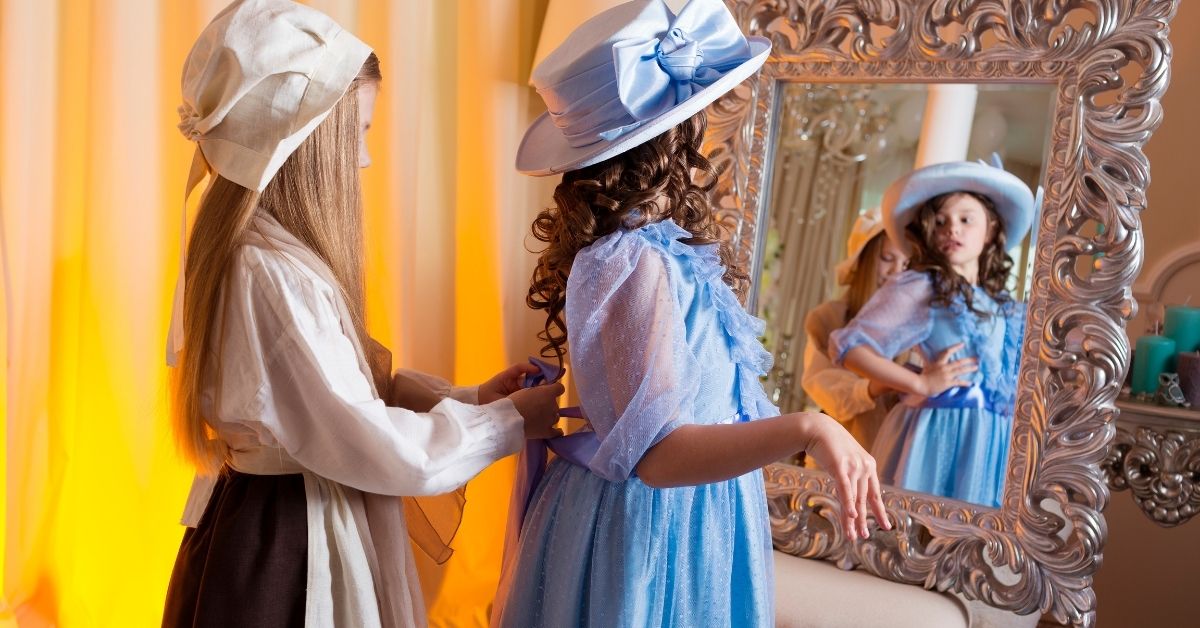In the landscape of education, storytelling is an ancient form of communication that remains relevant even in today’s digital age. For homeschooling parents, capturing a child’s imagination can be the key to making learning both engaging and effective. When it comes to teaching history, dry facts and timelines can often overshadow the fascinating narratives that lie beneath. This is where storytelling comes into play, transforming history lessons into captivating journeys through time. But what exactly is the storytelling method of teaching?
At its core, the storytelling method of teaching is about more than just recounting events. It’s about weaving together facts, emotions, and human experiences to create vibrant narratives that children can relate to and remember. By incorporating this method, parents can open a window to the past that connects directly to a child’s sense of curiosity and wonder. This blog post explores the role of storytelling in teaching history, offering homeschooling parents tools and techniques to turn historical events into compelling stories.
By the end of this article, you’ll have discovered how storytelling can make history come alive for your child, with practical examples and actionable tips to use in your homeschool curriculum.
A Structural Approach
Storytelling as an educational tool isn’t new, but its application in teaching history to children offers a fresh perspective. When we talk about the storytelling method of teaching, we refer to a structured approach that involves crafting narratives around historical events, figures, and eras. This method leverages the natural human inclination towards stories, making it easier for children to absorb complex information.
One of the key advantages of teaching history through storytelling is its ability to contextualize historical events. Instead of presenting isolated facts, storytelling places these events within a broader narrative, making them more relatable and understandable. For example, instead of merely memorizing dates and names, students learn about the motivations, challenges, and triumphs of historical figures, providing a deeper understanding of the past. Furthermore, storytelling encourages critical thinking and empathy.
By stepping into the shoes of people from the past, children develop a nuanced understanding of history’s complexities, such as cultural differences, ethical dilemmas, and the impact of historical events on everyday lives.
Benefits Of Storytelling In Teaching History
The storytelling method of teaching history offers numerous benefits that go beyond mere knowledge retention. One of the most significant advantages is enhanced engagement. Children are naturally drawn to stories, and when historical facts are embedded in a narrative, they become more invested in the learning process. Another benefit is improved memory retention. Research has shown that information embedded within a story is more easily recalled than isolated facts. This is because storytelling leverages associative memory, where details are linked to characters, plots, and settings, making them easier to remember.
Additionally, storytelling fosters creativity and imagination. When children hear historical narratives, they’re encouraged to visualize the events and characters in their minds. This not only aids in understanding but also inspires them to create their own stories, further solidifying their grasp of historical concepts.
Crafting engaging narratives for the purpose of teaching history through storytelling involves a few key elements. First, it’s important to choose the right story. Not every historical event lends itself well to storytelling, so it’s crucial to select topics that have clear narratives, characters, and conflicts. Once a story is chosen, it’s essential to build a structure that includes a beginning, middle, and end. This structure helps maintain the child’s interest and provides a framework within which historical facts can be woven. For instance, when discussing the American Revolution, you might start with the tensions between the colonies and Britain, move to key battles, and conclude with the signing of the Declaration of Independence.
Incorporating vivid details and sensory elements is another effective strategy. Describing the sounds of a battlefield, the smell of a king’s banquet, or the sights of an ancient marketplace can transport children to another time and place, enriching their learning experience.
Characters and conflict are central to any good story, and they play a vital role in the storytelling method of teaching. By focusing on historical figures and the challenges they faced, parents can create compelling narratives that resonate with children. Characters should be relatable, with distinct personalities, motivations, and flaws. Whether it’s the bravery of Harriet Tubman or the cunning of Genghis Khan, these elements help humanize historical figures, making them more accessible to young learners.
Conflict, on the other hand, drives the narrative forward. It could be a war, a political struggle, or a personal dilemma. By framing historical events as a series of conflicts and resolutions, children gain a better understanding of cause and effect, as well as the complexities of historical change.
Using Visual And Multimedia Aids & Storytelling Techniques For Homeschooling Parents
Incorporating visual and multimedia aids can enhance the storytelling method of teaching by providing additional layers of engagement. Pictures, videos, and interactive timelines can bring historical narratives to life, making them more tangible for children. For example, watching a short documentary or animated film about the pyramids can complement a story about ancient Egypt, providing visual context and igniting a child’s imagination. Similarly, interactive maps and timelines can help children visualize historical events and their progression, reinforcing the narrative. Multimedia aids also cater to different learning styles. While some children learn best through auditory storytelling, others benefit from visual or kinesthetic elements. By using a combination of media, homeschooling parents can create a more inclusive and effective learning environment.
Homeschooling parents can employ several storytelling techniques to optimize the learning experience. One such technique is dramatization, where children act out historical events or take on the roles of historical figures. This hands-on approach not only makes learning fun but also deepens their understanding through active participation.
Another technique is the use of analogies and metaphors. Comparing historical events to familiar modern-day scenarios can make complex concepts more relatable. For example, likening the fall of the Roman Empire to a “superpower losing its strength” can help children grasp the significance of such events.
Finally, encouraging children to create their own stories or retell historical narratives in their own words can foster creativity and critical thinking. Whether through writing, drawing, or oral storytelling, this practice allows children to internalize and personalize historical knowledge.

Teaching history through storytelling doesn’t have to be isolated from other subjects. In fact, integrating storytelling with subjects like language arts, geography, and even science can create a more holistic educational experience. For instance, while learning about the Industrial Revolution, children can explore related scientific advancements and their impact on society.
This interdisciplinary approach not only enriches the story but also helps children make connections across different fields of knowledge. Additionally, storytelling can enhance language skills by exposing children to rich vocabulary, varied sentence structures, and different narrative styles. This can be particularly beneficial for developing reading comprehension and writing abilities.
Addressing Challenges & Evaluating The Impact Of Storytelling
While the storytelling method of teaching history offers numerous benefits, it also comes with its own set of challenges and misconceptions. One common misconception is that storytelling oversimplifies history, glossing over important details in favor of entertainment. To address this, it’s crucial to strike a balance between engaging narratives and historical accuracy.
While stories should captivate and inspire, they should also be grounded in fact, providing a truthful representation of historical events. Another challenge is ensuring that stories remain inclusive and diverse, representing multiple perspectives and cultures. Homeschooling parents should strive to highlight diverse narratives, showcasing the contributions and experiences of different groups throughout history.
Evaluating the impact of storytelling in teaching history can help homeschooling parents refine their approach and maximize learning outcomes. One way to assess impact is through feedback and reflection. Encouraging children to discuss their thoughts and impressions after a storytelling session can provide valuable insights into their understanding and engagement. Another method is to incorporate quizzes, projects, or creative assignments that require children to apply what they’ve learned. By assessing their ability to recall, analyze, and interpret historical narratives, parents can gauge the effectiveness of their storytelling approach.
It’s also important to remain open to adaptation and improvement. Each child is unique, and what works for one may not work for another. By continuously evaluating and adjusting their storytelling techniques, homeschooling parents can create a dynamic and personalized learning experience.
Incorporating storytelling into the teaching of history offers a powerful way to engage young learners and spark their curiosity. By weaving historical events into narratives, homeschooling parents can provide a window into the past that is both informative and inspiring. Through understanding the storytelling method of teaching, parents can unlock a world of possibilities for their children’s education. They can transform dry facts into captivating tales, shaping a love for history and a deeper appreciation for the lessons it holds.
For those who wish to explore further, there are numerous resources available, from historical fiction books to online courses on storytelling in education. By continuing to hone their storytelling skills, homeschooling parents can empower their children to become lifelong learners with a passion for history that extends far beyond the classroom.


